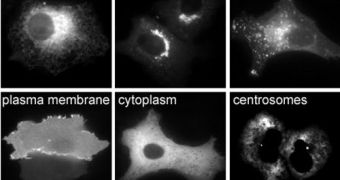An international collaboration of researchers has recently conducted a new study on how cells die, which may further studies being conducted in this important field of research considerably.
Programmed cellular death is one of the most important processes in the human body, because it allows us to get rid of old, decrepit cells, and to replace them with new ones.
When this automated mechanism fails, cells go on to live beyond their planned life span, and end up suffering mutations that can make them cancerous. They also spread out of control, producing tumors.
The research team that conducted research into this field featured experts from five research centers, including a group at the CSIC – University of the Basque Country Biophysics Unit.
Details of the amazing new work appear in a paper published in the latest issue of the esteemed scientific journal Cell, AlphaGalileo reports.
The group highlights the fact that cellular death mechanisms destroy as much as 100 million cells each single day. This is all done in a bid to keep our bodies as safe from infections as possible.
Investigating the mechanisms that underlie the process, called apoptosis, has been a long-term effort, with the first studies into the issue being carried out some twenty years ago.
Several cellular components involved in the process have been found thus far, but the sheer complexity of untangling all the interactions at play during apoptosis is making research teams reconsider their strategies.
Three cellular components, called BAX and DRP-1 (proteins) and cardiolipin, have been found in the new work to play a critical part in destroying cellular power plants by collaborating with each other.
Their joint action results in a hole being punched in the walls of mitochondria, which are structures that convert nutrients arriving at the cell into adenosine triphosphate (ATP), the body's main energy molecule.
With the walls pierced, the cells start an immediate process of degradation, and is destroyed. But the novelty of this research is discovering a new interaction mechanism between BAX and DRP-1.
It would appear that the two proteins never touch each other physically, as one would expect, but rather that they communicate through lipids of the membrane.
“More specifically, what one of the proteins (DRP-1) does is to deform the lipid bilayer of the membrane and the resulting structure is what apparently enables the activation of the second protein (BAX),” researcher Mr Gorka Basañez says.
The expert, who was one of the authors for the new study, is based at the CSIC-UPV/EHU Biophysics Unit.
Also involved in the new work were professor Jean-Claude Martinou of the Department of Cell Biology at the University of Geneva (Switzerland), and investigators at the universities of Salzburg (Germany), Hanover (Germany) and Florida (US).

 14 DAY TRIAL //
14 DAY TRIAL //